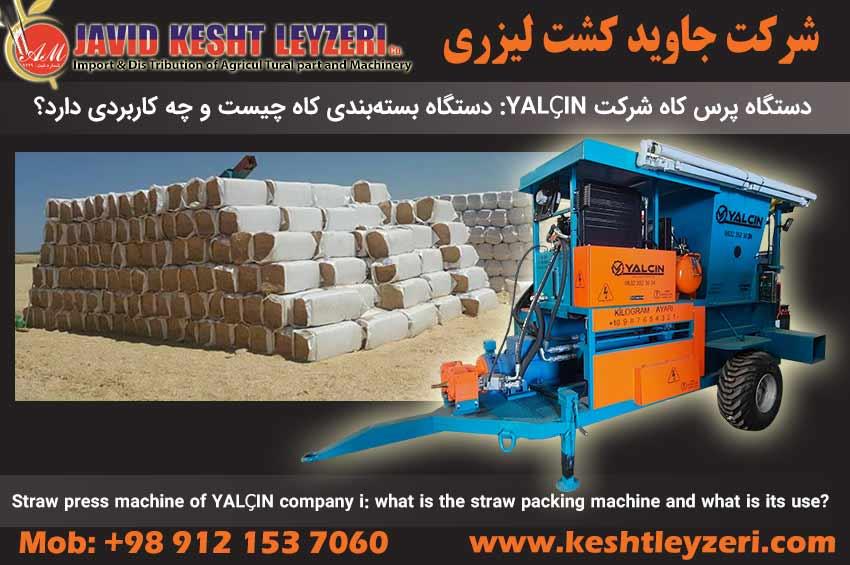
Development of Khasil silage fodder, a step towards reducing water consumption
javid keshtleyzeri Co.ltd
Iran is located in the arid and ultra-arid region of the world, and due to climate change, the increase in the temperature of the summer season has caused an increase in the amount of summer evaporation and transpiration in the country, so that a large share of the water used in fodder production farms during the summer season is spent on evaporation. And he sweats. The production and consumption of silage fodder from autumn cereals is one of the solutions to produce fodder with minimal water consumption. So that by planting winter grains and legumes as new fodder sources during the autumn, winter and early spring seasons, we will not only face the minimum amount of evaporation and transpiration, but also by using the rainfall stored in the soil (green water) in It will be used the most to increase water efficiency. In the winter fodder production program, agricultural products such as barley, terticale and oats are used in order to provide a suitable ratio of carbon hydrates, and the group of vetches, cornflower, cowpea and kholer are used in order to provide a suitable ratio of protein to produce high quality silage. . In rainy conditions, it is possible to produce dry winter fodder, or in other words, to create meadows using annual and multi-year winter cereals in pure form or mixed with legume family in areas that have an average rainfall of at least 350 mm per year with a suitable time distribution. Is. The amount of fodder production of winter cereals, pure or mixed with vetch group, is estimated to be around 35 to 45 tons per hectare. Water productivity in this fodder production system will be around 12 to 14 kg silage fodder per cubic meter of water.
The management of fodder grain farms, including planting, sowing and harvesting, is different from the management of seed production farms. Fodder fields of winter grains, which are planted pure or mixed with legumes, including vetch, sorghum, etc., may be dedicated to direct grazing, silage production, or dry fodder. There are differences between winter cereals and varieties of each of these cereals in terms of growth characteristics, fodder quantity, fodder quality, grazing ability and regrowth.
In general, winter cereals with three fodder purposes, which include:
A- Direct grazing of light and heavy livestock in winter and spring
B. Production of dry fodder and its consumption during severe fodder shortage
C- In order to produce silage and consume it during spring and summer.
The very good growth of winter grains in autumn and winter and its harvest in early spring fills the lack of fresh fodder and silage between the beginning of spring and the preparation of other fodder, so that the continuity of fodder production is maintained throughout the year. will be. Winter cereals are among crops that, in addition to relative resistance to dry and sometimes salty conditions, have the ability to grow in autumn and winter, and are harvested in silage or single rows at the beginning of spring.
In general, it is possible to grow winter cereals to produce fodder both in wet and dry conditions. By managing nitrogen nutrition in winter grain fields that are cultivated for fodder production, it is possible to graze the winter grain fields once at the time of tillering and then a silage harvesting stage at the time of plant pregnancy until the stage of cluster emergence. One of the other advantages of growing winter cereals in the drylands for the purpose of grazing light livestock is reducing the pressure caused by indiscriminate grazing on permanent pastures, so that by creating artificial pastures for winter cereals, sufficient time has been provided for the vegetative growth and reproduction of permanent pastures. And while maintaining genetic reserves, it provides better productivity than permanent pastures.
Cultivation of winter cereals in order to produce fodder can be a part of the revitalization program of destroyed pastures. So that the availability of winter grain fodder in early spring reduces the pressure caused by grazing pastures. Although winter grain fodder is usually higher than corn silage in terms of crude protein content, it is lower than corn silage in terms of metabolic energy.
Among the winter grains, barley winter fodder, if harvested at the milking stage of the seeds, is at the highest level in terms of quality and is even equal to corn silage fodder. When winter cereals are harvested in the last stage of milking to produce silage, they usually have between 4% and 4% more crude protein than corn. It is worth mentioning that the fodder of most winter cereals, if harvested in the pregnant growth stage (emergence of flag leaves), qualitatively approaches the nutritional value of corn. The fodder grazed in winter cereals has high quality characteristics, so that in addition to producing 1 ton of dry matter per hectare during grazing, the amount of crude protein in this forage is high and each kilogram of its dry matter contains 12 megajoules of metabolizable energy. .
In general, winter grain fodder or other sources of fodder that are allocated for silage production should have the following characteristics:
A- At least 30% of the fodder's dry matter should contain soluble sugars.
B- The dry matter of fodder should be more than 20%, although the optimal dry matter percentage is 30%.
C- The buffering capacity of the fodder mass should be such that it does not resist the change of acidity






